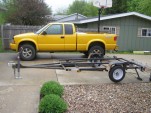
Wiring Diagram - Help Please!!!
30 posts
• Page 1 of 2 • 1, 2
Wiring Diagram - Help Please!!!
Here is the wiring diagram I plan to use for my TD build. I am a complete idiot when it comes to electrical work. Can you guys please give me a quick critique?


Make time for fitness and it'll make time for you.
http://TommyDoran.com
http://tommydoran.com/favor
Interview: http://goo.gl/Non1oR
Build Journal - http://www.tnttt.com/viewtopic.php?f=50&t=58395
Come find me on Facebook - http://www.facebook.com/tommy.doran


http://TommyDoran.com
http://tommydoran.com/favor
Interview: http://goo.gl/Non1oR
Build Journal - http://www.tnttt.com/viewtopic.php?f=50&t=58395
Come find me on Facebook - http://www.facebook.com/tommy.doran


- Tommy2tone_1999
- Teardrop Master
- Posts: 236
- Images: 148
- Joined: Tue Oct 21, 2008 10:54 am
- Location: St. George, Louisiana
Re: Wiring Diagram - Help Please!!!
I'll print of your diagram and have an automotive electrician have a look at it. There are a couple places you might be able to use a smaller gauge wire. Also what are the amps required per device will help to provide the correct wire size. Also what size camper dimensions are you looking at.
-

Sonoma ZR2 - Teardrop Master
- Posts: 140
- Images: 90
- Joined: Mon Jul 05, 2010 4:47 pm
- Location: Forest City, Iowa

 but you can see the relationship between gauges.
but you can see the relationship between gauges.











